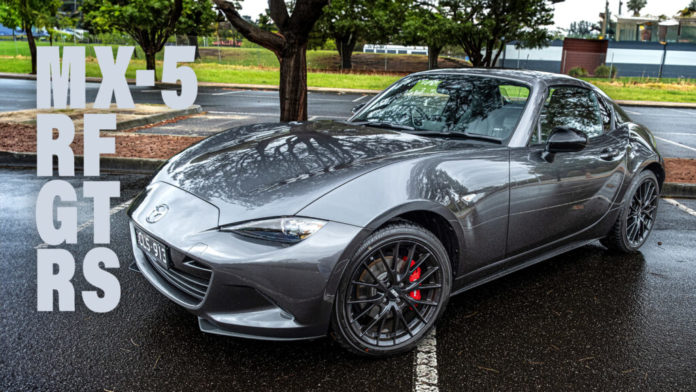Here’s a sad admission for you. Prior to just a few weeks ago, I had never had the opportunity to drive the ND-generation Mazda MX-5. I’ve driven the NB and NC models in the past but the current model has always evaded me. Thankfully, that’s now changed and I can happily report that it lived up to my lofty expectations.
window.ramp.que.push(function () {
window.ramp.addTag(“pwMobiMedRectAtf”);
})
A dizzying array of different MX-5 models are offered in markets around the world. In Australia, the outgoing 2023 model is topped out by the GT RS and RF GT RS variants and it is the latter of these two that we recently lived with for a week.
Review: The Maserati Grecale GT Proves There Are Options Beyond The Porsche Macan
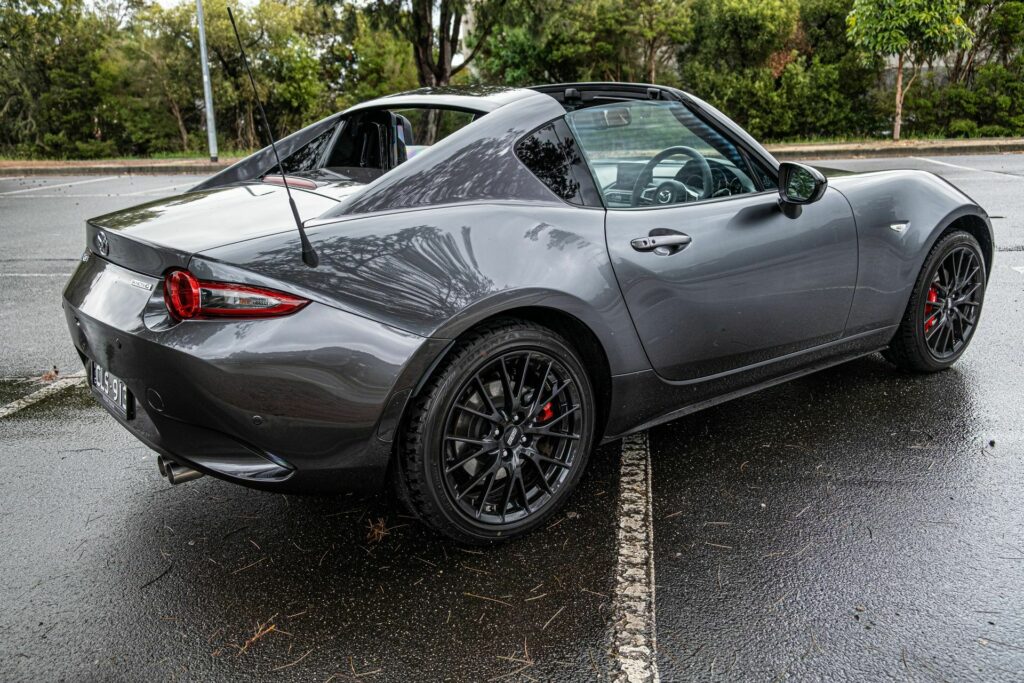
The most special of MX-5s
advertisement scroll to continue
window.ramp.que.push(function () {
window.ramp.addTag(‘pwDeskMedRectAtf’);
})
window.ramp.que.push(function () {
window.ramp.addTag(“pwMobiMedRectBtf1”);
})
SWIPE
So, what makes the RF GT RS different from the standard model? Well, apart from it having a name more akin to a new Porsche 911 model, it benefits from a number of welcome upgrades. For starters, the RF in the name reflects the fact that this is the version with the retractable fastback roof, rather than a soft top. Then there is the GT RS package itself where the real magic is happening.
First and foremost, Mazda has equipped the car with a unique set of forged 17-inch wheels from BBS with a lovely black finish and clad in Bridgestone Potenza S001 tires. It has also been upgraded with new four-piston Brembo brake calipers up front clamping down on enlarged 280 mm (11-inch) discs with performance brake pads. For as nice as these upgrades are, it is on the suspension front where the real magic happens thanks to trick Bilstein shocks at all four corners and a front strut tower brace. More on that later.
Photos Brad Anderson / Carscoops
Aussies can only purchase the ND MX-5 with a 2.0-liter naturally-aspirated four-cylinder, although there was a 1.5-liter available earlier in the car’s lifecycle. We’ve heard this engine was particularly spritely but not many people opted for it, so it’s hardly a surprise it was dropped from the range. In the case of the RF GT RS, the 2.0-liter is good for a respectable 135 kW (181 hp) at 7,000 rpm and 205 Nm (151 lb-ft) of torque at 4,000 rpm. Lesser versions of the car are available with an automatic ‘box but the GT RS is sold exclusively with a six-speed manual. Not only does this vastly improve the driving experience but it brings with it the added perk of a limited-slip differential, a feature not found on automatic models.
Back to basics
window._taboola = window._taboola || [];
_taboola.push({
mode: ‘thumbnails-a-mid’,
container: ‘taboola-mid-article’,
placement: ‘Mid Article’,
target_type: ‘mix’
});
The cabin of the MX-5 is a tight squeeze for anyone that’s over 6 feet tall but that’s nothing new, previous generations have been like that too. Taller drivers will have to push the seat back fully and recline it as far as possible but even still, your head will be pressed firmly against the roof, forcing you to drive around in a crunched position. Fortunately, there is plenty of width in the seats and leg room is adequate too, providing plenty of clearance from the bottom of the steering wheel and your knees.
Photos Brad Anderson / Carscoops
Speaking of the steering wheel, it is a gem of the thing. Unlike so many other sports cars nowadays with their flat-bottomed wheels, the rim of the MX-5 RF GT RS is round and has the perfect diameter. There are no frills about it and while the multi-function buttons it has are made from simple black plastic, they do the job.
A downside of the 2023 MX-5 being nine years old is the infotainment system. The screen is small and has the brand’s outdated MZD Connect software. It is extremely outdated and while it has been available with wired Apple CarPlay and Android Auto since 2018, it’s not particularly pleasing to the eye nor is it very intuitive. Fortunately, the recently released 2024 MX-5 has been updated with a bigger screen and Mazda’s current UI. We’re hoping to get behind the wheel of this model early next year.
Everything else in the cabin is simple and well-positioned. The HVAC controls are easy to operate and buyers will be pleased that there are heated seats too. Cupholders that can be repositioned are also a nice feature, as are the speakers in the headrests, making Bluetooth calls a breeze even with the roof down.
window.ramp.que.push(function () {
window.ramp.addTag(“pwMobiMedRectBtf2”);
})
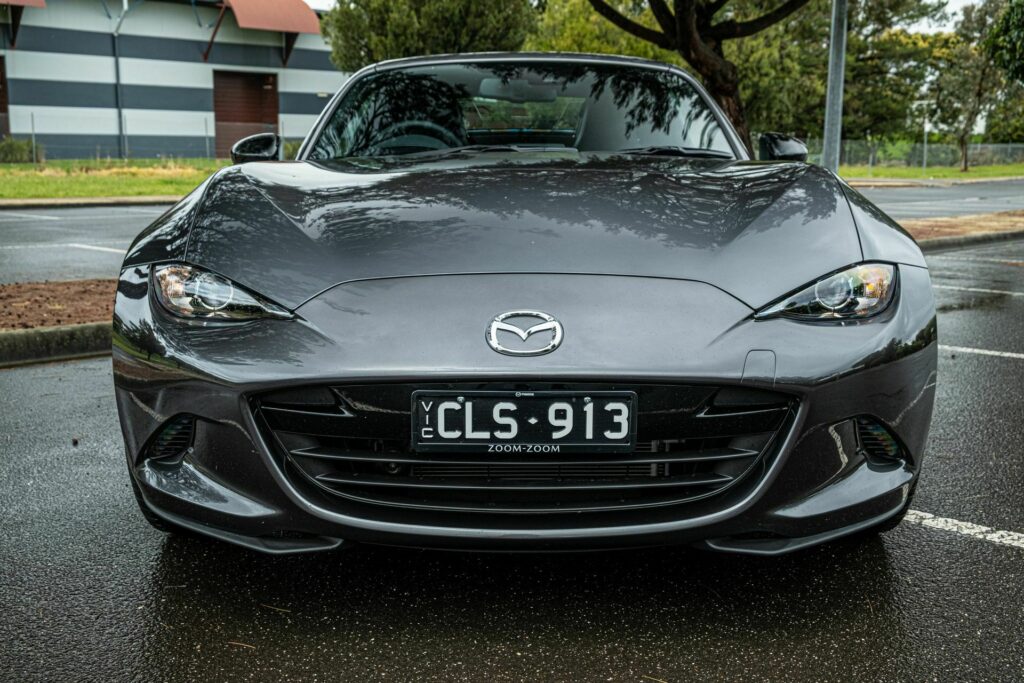
The joy of driving
Out on the open road is where the MX-5 really shines. In a world where cars are continually growing in size and adding overly complex powertrains, it’s quite remarkable that Mazda is still able to build a car that weighs just 1,052 kg (2,319 lbs) in Roadster guise and 1,101 kg (2,427 lbs) in RF form.
window.ramp.que.push(function () {
window.ramp.addTag(“pwDeskMedRectBtf1”);
})
The car’s weight, or lack thereof, means that the 2.0-liter engine provides solid and enjoyable performance despite its modest power and torque figures. The four-pot revs to a touch over 7,000 rpm and pulls strongly throughout the entirety of the rev range but it really comes to life above 5,000 rpm and is an absolute joy to wring the life out of. It also sounds surprisingly meaty from behind the wheel and could fool you into believing it’s a 2.2-liter or a 2.5-liter. Of course, no engine feels complete without being paired to the appropriate transmission. The six-speed is just as good as we had hoped.
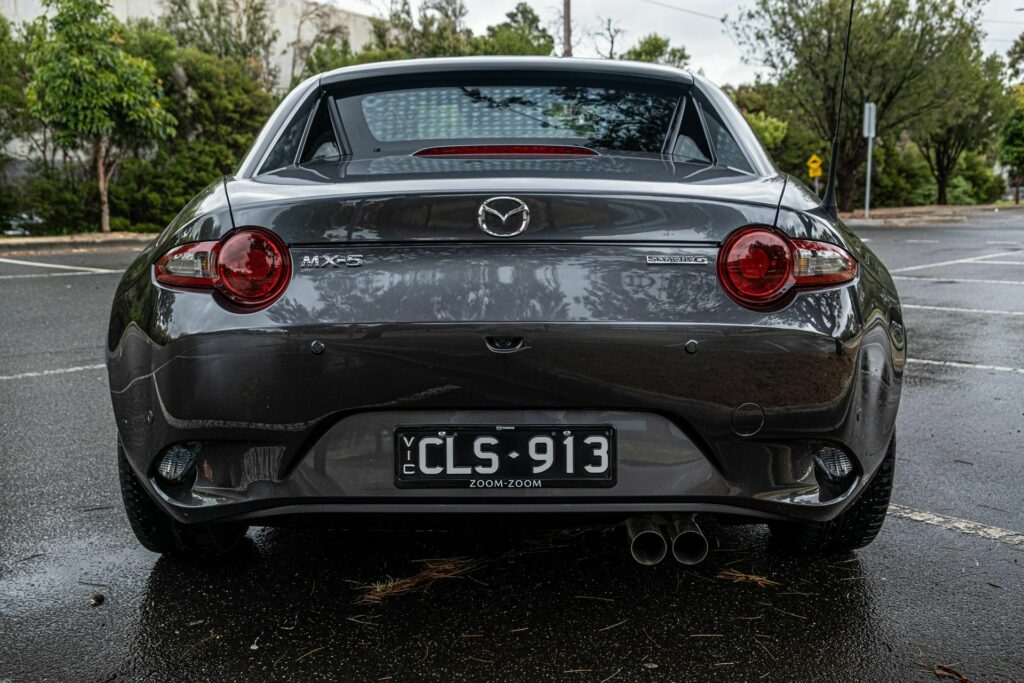
The shifter is perfectly sized and positioned right where you want it. It has a rifle-bolt-like action with very little play and only requires short, sharp movements to perfectly position into the next gear. The weighting of the shifter is just about perfect, as is the light clutch, and during my time with the car, I was continually rowing through the gears just for the fun of it.
There’s no automatic rev-matching feature like most manuals out there at the moment, but that’s no issue as rev-matching is a walk in the park. Heel and toeing is also easy, although drivers with big feet might find the pedals are a little too close together. As mentioned, the MX-5 RF GT RS comes fitted with beefed-up Brembo brakes as standard and they too are superb, showing no signs of fade no matter how much stress I put them under.
Supremely comfortable
I was particularly impressed with the car’s Bilstein dampers. So many car manufacturers with performance-focused models priced in the region of AU$50,000 (~$33,000) are guilty of making their cars too stiff and too harsh. This is particularly true among hot hatches where brands try and hide their weight by making everything a little too solid. That’s not the case with the MX-5 GT RS. In fact, the ride of the car is not only comfortable, it’s plush.
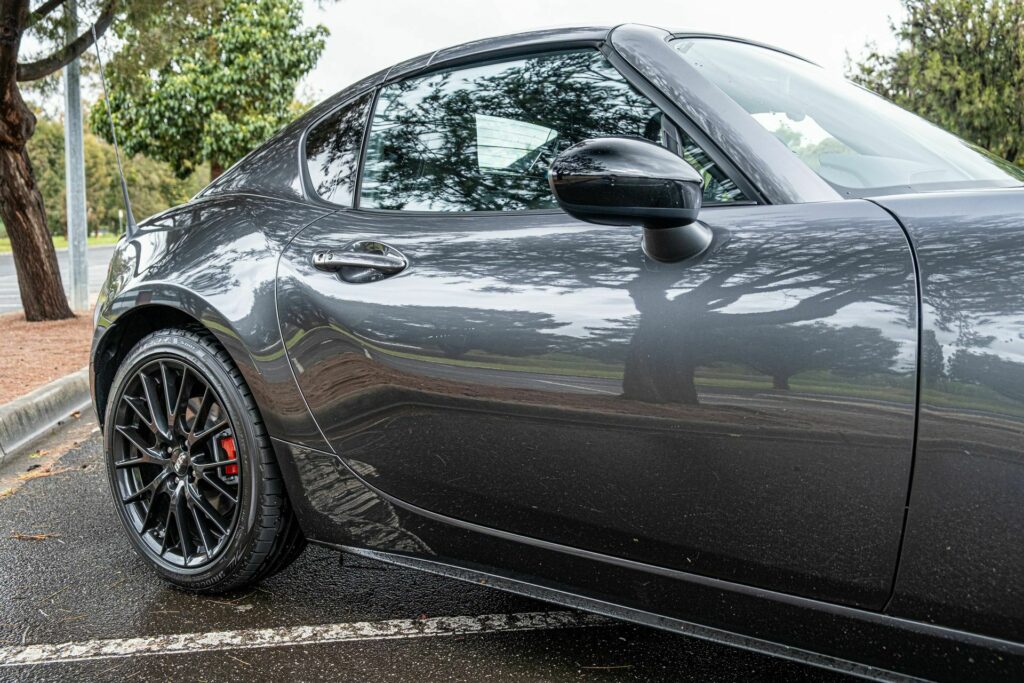
A strip of suburban road near my house consists of 16 speed bumps over less than 2 kilometers (1.2 miles). Some of the bumps are particularly harsh and in most new cars I test, I have to slow down to around 30 km/h (18.6 mph) to get over them comfortably.
In the MX-5, I didn’t even need to brake for them and could comfortably glide over them at 50 km/h (31 mph) without a care in the world, not something that can be said of the Nissan Z and Toyota Supra I recently tested. The poise and control of the dampers is exceptional and they make the car a comfortable daily driver as long as you don’t need much interior or cargo space.
Read: Mazda Plotting “Cool” Special Editions For The MX-5 ND Before Next-Gen Arrives
The comfort provided by the suspension set-up doesn’t negatively the handling either. Pitch the Mazda into a corner at high speed and while there is more body roll than you may expect, it remains stable and the Bridgestone tires provide plenty of grip. The MX-5 has always been like this but I wasn’t so sure the GT RS would be the same because of the Bilstein dampers. Thankfully, they have been developed in just a way as to ensure confidence-inspiring handling at the limit of grip and comfort surpassing that of many sports cars costing twice as much.
Should I get one?
Mazda appears to have plans to continue production of the ND MX-5 for several more years, possibly extending until 2028. There are rumors suggesting that the next-gen model could be larger and might adopt a hybrid rotary powertrain. As it stands, the MX-5 remains one of the finest sports cars on the market, although the price of the RF GT RS version does make it a little hard to justify unless you’re a diehard MX-5 enthusiast.

